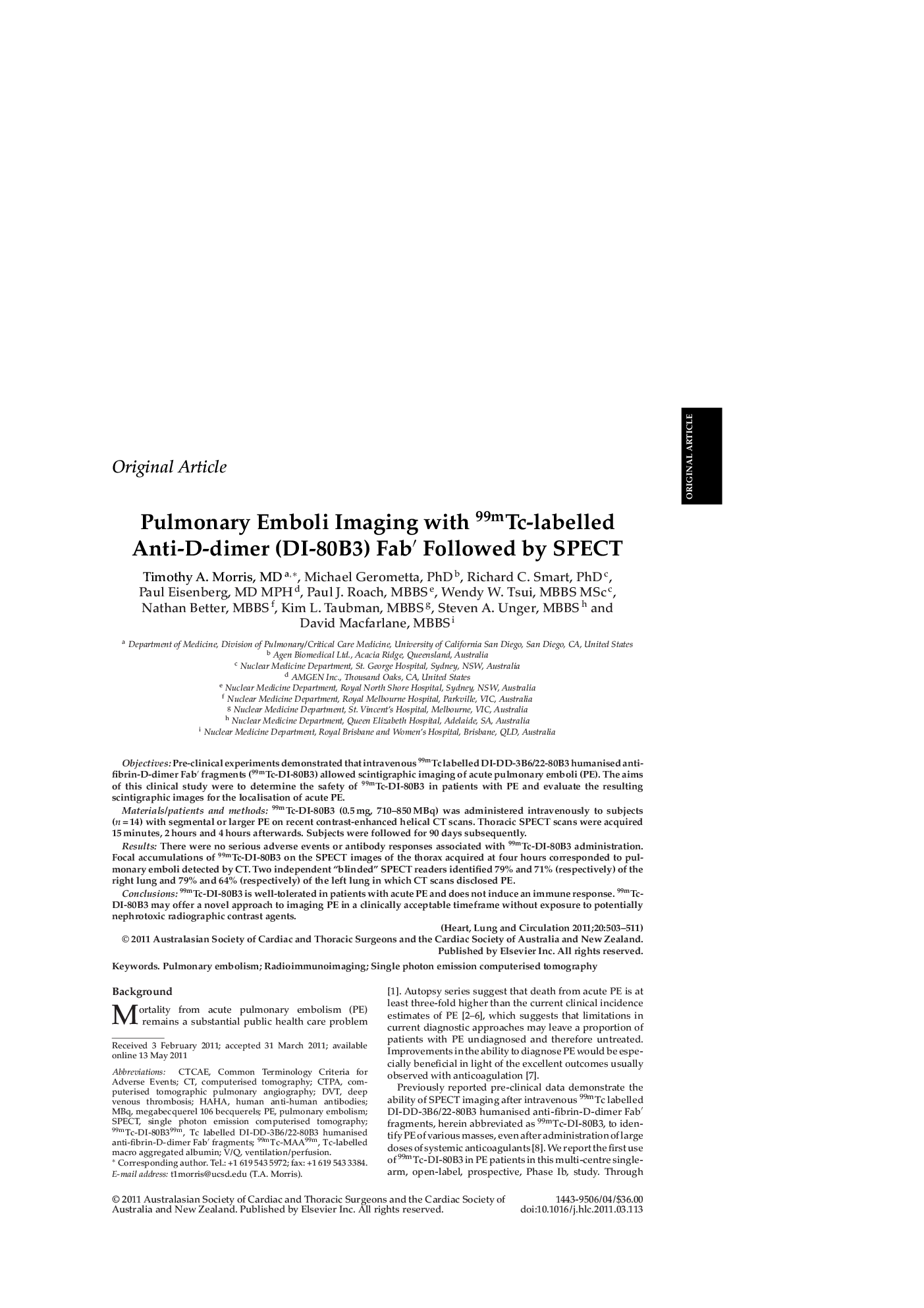| Article ID | Journal | Published Year | Pages | File Type |
|---|---|---|---|---|
| 2919290 | Heart, Lung and Circulation | 2011 | 9 Pages |
ObjectivesPre-clinical experiments demonstrated that intravenous 99mTc labelled DI-DD-3B6/22-80B3 humanised anti-fibrin-D-dimer Fab′ fragments (99mTc-DI-80B3) allowed scintigraphic imaging of acute pulmonary emboli (PE). The aims of this clinical study were to determine the safety of 99mTc-DI-80B3 in patients with PE and evaluate the resulting scintigraphic images for the localisation of acute PE.Materials/patients and methods99mTc-DI-80B3 (0.5 mg, 710–850 MBq) was administered intravenously to subjects (n = 14) with segmental or larger PE on recent contrast-enhanced helical CT scans. Thoracic SPECT scans were acquired 15 minutes, 2 hours and 4 hours afterwards. Subjects were followed for 90 days subsequently.ResultsThere were no serious adverse events or antibody responses associated with 99mTc-DI-80B3 administration. Focal accumulations of 99mTc-DI-80B3 on the SPECT images of the thorax acquired at four hours corresponded to pulmonary emboli detected by CT. Two independent “blinded” SPECT readers identified 79% and 71% (respectively) of the right lung and 79% and 64% (respectively) of the left lung in which CT scans disclosed PE.Conclusions99mTc-DI-80B3 is well-tolerated in patients with acute PE and does not induce an immune response. 99mTc-DI-80B3 may offer a novel approach to imaging PE in a clinically acceptable timeframe without exposure to potentially nephrotoxic radiographic contrast agents.
